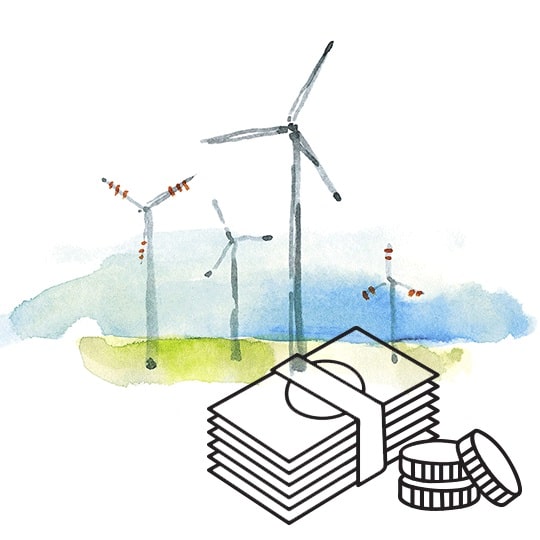
A green bond is a bond used to fund “green” projects that serve to reduce or prevent environmental or climate damage. Exemplary projects support climate change mitigation, sustainable agriculture, renewable energy, clean air and water, and even affordable housing that utilizes energy-efficient architecture and technology.
Checks and Balances
Green bonds are distinguished from conventional bonds because issuers are restricted to using the proceeds of the issuance in accordance with specific protocols. They state in advance, for example, how the proceeds will be used and how they will monitor and report on the projects being funded. Issuers also undergo an external pre-issuance review, to ensure that the proceeds do, indeed, fund legitimately “green” projects.
What Makes a Green Bond “Green”?
When identifying investments in the green bond market, investors essentially apply the same financial analysis process that they do when analyzing any other bond in the traditional bond market. The significant difference is that the use of proceeds will be entirely invested in a “green” project. The challenge in connection with green bonds is the lack of a uniform definition in the market today of what constitutes “green”. In order to create more transparency and trust, various organizations are striving for standardization.
In 2014, the Green Bond Principles (GBP) provided a voluntary standard for green bonds. They aimed at providing clarity and transparency for issuers and investors and cover the processes for designating, disclosing, managing, and reporting of green bonds. Ongoing monitoring and development of those guidelines is now independently hosted by the ICMA.
“Green-labeled bonds” are those that have been independently verified as adhering to such standards. By contrast, “unlabeled bonds” lack that verification and may, therefore, pose greater risk to investors.
In 2020, the European Union announced the establishment of an EU green bond standard (EUGBS). The proposed regulation aims to set a gold standard for how companies and public authorities can use green bonds to raise funds on capital markets, while meeting tough sustainability requirements and protecting investors. To provide additional guidance, the European Union also developed a taxonomy of activities that are classified as sustainable.
A Brief but Spectacular History
The very first green bond, for €600 million, was issued in 2007 by the European Investment Bank (EIB), and in 2013 the World Bank (IFC) issued two $1 billion global green bonds – the first to be benchmarked in U.S. dollars. Over the past decade the market has surged, and Climate Bonds now predicts that the global market for green bonds is approximately $1 trillion. That market includes green bond mutual funds, UCITS funds, and ETFs.
Financial and Environmental Values Align
Investors wanting their bond portfolios to align with their financial objectives in support of environmental initiatives can do so via green bonds to help ensure a greener planet.
Find Out More
To read a more extensive introduction to green bonds and green bond investing, see our Quick Start Guide to Green Bonds.
To hear a comprehensive discussion about Green Bonds and the green bond market, listen to my complete interview on the SRI360º Podcast with Bram Bos, Lead Portfolio Manager of Green, Social and Impact Bonds at NN Investment Partners.







